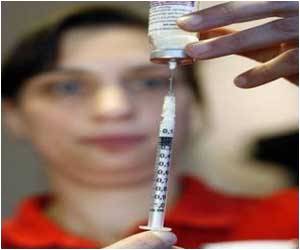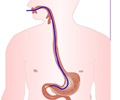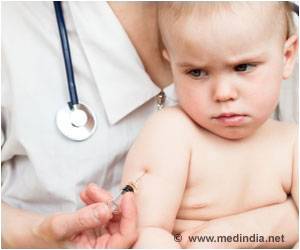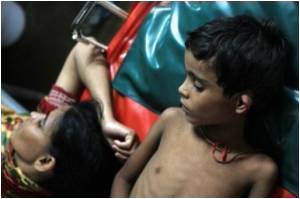
Irene M. Shui, Sc.D., of Harvard Medical School and Harvard Pilgrim Health Care Institute, Boston, and colleagues reexamined intussusception risk associated with rotavirus vaccination, with a specific focus on the 1- to 7-day risk window after administration of the first dose. The study included infants 4 to 34 weeks of age, enrolled in the Vaccine Safety Datalink (VSD) who received RV5 from May 2006 - February 2010. Among the analyses the researchers performed was a comparison of the rates of intussusception in infants who had received RV5 with the rates of intussusception in infants who received other recommended vaccines without RV5 during the same period. The authors also included data on the expected number of intussusception visits based on background rates assessed prior to U.S. licensure of the RV5 (2001-2005).
From May 2006 through February 2010, 786,725 doses of RV5 were administered. Of these, 39 percent (309,844) were first doses, 33 percent second doses, and 28 percent third doses. The comparison cohort included 389,026 visits. The researchers found there were no statistically significant increased risks for intussusception in either the 1- to 30-day window or the 1- to 7-day risk window for all doses combined or in dose-specific analyses, after adjusting for age. For the 1- to 30-day window following all RV5 doses, there were 21 cases of intussusception compared with 20.9 expected cases; following dose 1, there were 7 cases compared with 5.7 expected cases. For the 1- to 7-day window following all RV5 doses, there were 4 cases compared with 4.3 expected cases; for dose 1, there was 1 case compared with a 0.8 expected case.
"Based on our analysis, an excess risk of 1 intussusception event per 65,287 RV5 vaccines following dose 1 can be reliably excluded, although we cannot rule out the possibility of a lower-level risk," the authors write.
The researchers add that the reasons for the inconsistent results between different studies are unclear. "Because intussusception is a rare event, we cannot rule out a chance finding of risk in Australia and Mexico as well as the possibility of not detecting a low-level risk in the United States and Brazil. Another possible explanation might be effect modification of the rotavirus vaccine-intussusception association by an environmental or genetic factor that differs between the populations."
"In this large, prospective postlicensure safety monitoring study of almost 800,000 doses of RV5 vaccine, with more than 300,000 first doses, we did not observe any increased risk of intussusception following RV5 vaccination. The introduction of rotavirus vaccines has had a substantial public health effect on severe rotavirus disease in U.S. infants. Although we cannot entirely exclude the possibility of a very low-level risk, the findings of our study strengthen the evidence base in favor of vaccination for effective control of severe childhood rotavirus disease," the authors conclude.
Advertisement











